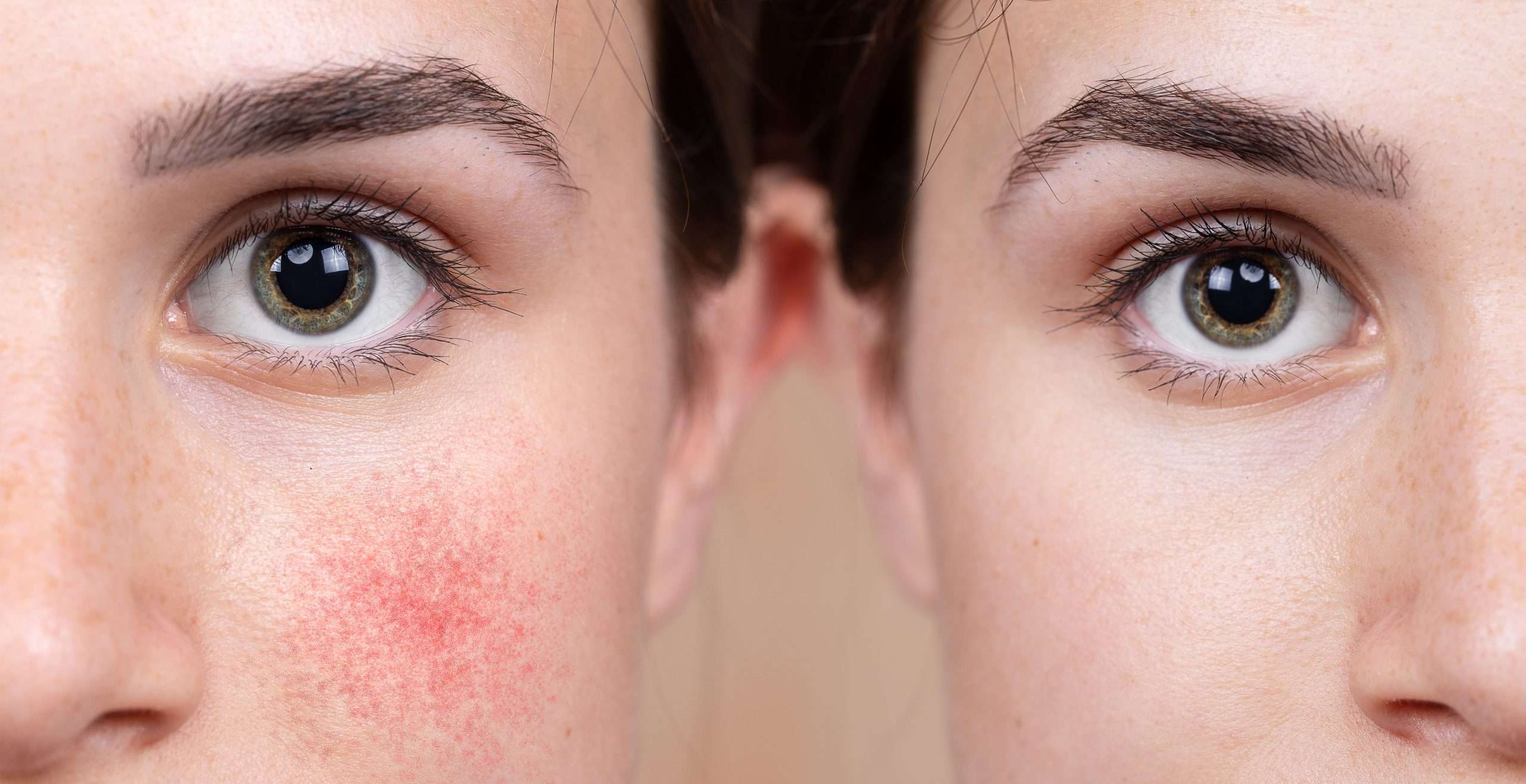Skin that shows indications of redness, inflammation and welts are considered to be reactive. Skin reacts to an internal imbalance in function, most commonly transepidermal water loss.
Skin is the largest organ of the human body. It is designed to regenerate and protect us from the external environment and has excellent regeneration qualities.
Reactivity is the effect of an imbalance in internal processes. The skin needs to return to homeostasis – the ability to regulate physiologically to ensure stability in response to fluctuations in the outside environment.

Rosacea is defined by a lack of structural integrity, transepidermal water loss and an impaired immune response. If left untreated, rosacea can be stubborn to revise and disfigure. Early stage rosacea exhibits redness, inflammation, and may even appear a little
bruised in appearance. Late stage rosacea will have acne like pustules and watery lesions.
Eczema is a condition of transepidermal water loss, where the barrier function and bi-layers
do not hold or retain vital moisture. The skin becomes dry, cracked, inflamed and may bleed.
Psoriasis is a condition where instead of cells regenerating every 28 to 30 days they
regenerate every 2 to 4 days. Psoriasis is typically a genetic condition of excess plaque.
Dermatitis is not a condition, but an umbrella term used to describe an inflamed skin
condition. Once the cause of the inflammation is established, it is called contact dermatitis.











Elena is a licensed esthetician with over 6 years of experience in the industry. She has worked on clients from all around the world and has decided to open up her own shop in NYC. At our location, we offer multiple med spa treatments and services that are sure to leave you feeling rejuvenated. For more information, please refer to my Instagram @probeauty.nyc!
© All Rights Reserved – Beauty Pro NYC.
Handcrafted with ❤️ by Online Marketing R Us.